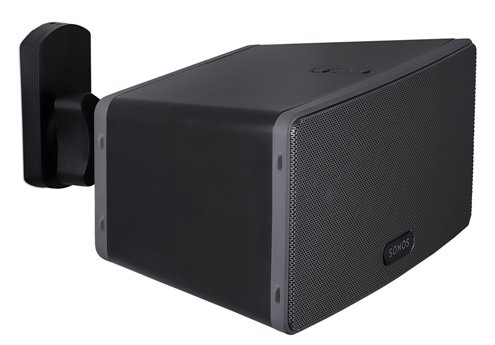Deciding the ideal loudspeaker positions is one of the most important things to consider when designing a sound system for a church. Now I am assuming as you are visiting this site, you may not be a qualified audio technician and are planning to do a sound installation on your own.
I perfectly understand as a small church pastor myself, that money isn’t always freely available and you can’t just hand a blank cheque to an audio consultant for $20,000 for a new live sound system.
If you are doing the sound design and system configurations yourself, and trying to keep costs low, it’s even more crucial that you understand the important things about church loudspeaker placement. Also, there are more technical articles out there for those that are interested and I will list those at the bottom of the post. I was a qualified electronic engineer before becoming a pastor, but I am aware that many folks attempting to install a new PA system will not have an engineering background, so I will try to keep it as simple as possible.
This article is primarily written with small churches in mind looking to improve sound reinforcement, and by small I mean from 30-150 max in attendance. Of course, you could be in a 2000-seater auditorium with 30 in attendance, but that’s unlikely. Larger churches and historic buildings need a more involved approach to speaker placement and hanging speakers in a room that I won’t cover here.
Number of loudspeakers required in a sound system
For most houses of worship or small sanctuaries, 2 loudspeakers should be sufficient. If you are planning to use 4 loudspeakers to give a better coverage pattern throughout your meeting room, then I would advise you to read my post on large churches(TBC) as there are specific things you will need to consider.
If you are only interested in amplifying speech, you can get away with a single central speaker mono system. We currently have 2 sanctuaries and one is a church plant that meets in a community hall. We currently use a portable PA Bose L1 compact single-tower speaker system which works well for that setting. However, if you have a worship band or any instruments I would recommend a stereo system with 2 loudspeakers.

Horizontal positioning guide – wall and ceiling hanging or mounting
The end goal of any church audio system is that everyone can hear clearly, so loudspeaker placement is crucial. So it’s vitally important that you are able to get maximum coverage on the horizontal plane. If you have a stage, then you may want to place loudspeakers at equidistant ends of the stage area, and point straight ahead. If this is a temporary install, then you will need to place it on speaker stands, but if this is your own building and the stage doesn’t need to be cleared for any reason, then it might be better to have the speakers permanently fixed in place.
If you have a more traditional church building that is box-shaped or T-shaped, then it may be better to wall-mount your loudspeakers. Mounting them to the wall, it also means that they are out of the way of anyone tinkering with the wiring or people tripping over cables.
If you are going to mount speakers to the wall in a room, then it is important that you don’t have them too close to the wall as you will end up with sound waves bouncing off that wall and causing all kinds of problems for you later on. Ideally, use a heavy-duty speaker wall mount, that can be adjusted in both the horizontal plane and the vertical plane. You may have to do this with a bit of trial and error, but you want the speakers to be pointing towards the point between the middle of the room and the rear of the room to give good coverage. Also, make sure that both speakers are pointing at the same angle as one another. You don’t want one at 45 degrees to the wall and the other at 20 degrees.
Also, when choosing a place for the wall mounts, you want them high enough to avoid people bumping their head on the loudspeaker, but low enough that you can easily lift the speaker into position(albeit with the help of a friend). On that point, for safety reasons, it might be advisable to put up some temp scaffolding to do this job as it can be the most common source of sound installation injuries! Yep, no joke. This should be taken into account for hanging speakers from the ceiling too.
I have a great resource you might be interested in called 101 Ideas for Church Sound Systems. You can find the post here.
Vertical placement
The vertical positioning will really depend on the layout of your room. The bottom line is that the speakers should be pointing to where people are, either standing or sitting. I would tend to aim for just below standing height for good all-round coverage.
If you have an elevated central stage, but a flat floor, then you will need to direct speakers down. Some speakers have two location holes for placing on a stand, one at 0 degrees and the other with an offset, usually between 6-9 degrees. If this is the case and you are using portable speaker stands, many makes don’t have a vertical adjustment, so I would recommend using the offset.
If you have a raised stage, but a rising floor, or a floor with a slight rake, then the speakers should not have any vertical offset and should be pointing straight forward.
If your speaker stands are on the same level as the worship space, then you will want to use the vertical offset.
If you are using fixed wall mounts then you will have a bit more flexibility to get the vertical offset to focus on the congregation, again I would advise just below head height.
Getting loudspeaker position right for your auditorium
Getting speaker placement right in any church building or large room isn’t easy and no matter how much care you take, there will still be issues you will need to resolve to get quality church sound. When sound waves bounce off materials, walls and people in a house of worship, the end result can be a bit unpredictable. However, by setting up some system EQ, you can overcome some of the undesirable low frequencies that can occur as a result.
See the link here for more info on speaker placement from Yamaha – http://www.yamahaproaudio.com/global/en/training_support/better_sound/part2/02/
Other sources referenced:
https://en.wikipedia.org/wiki/Loudspeaker_measurement
http://www.acoustics.salford.ac.uk/acoustics_info/loudspeakers/?content=index

Leave a Reply